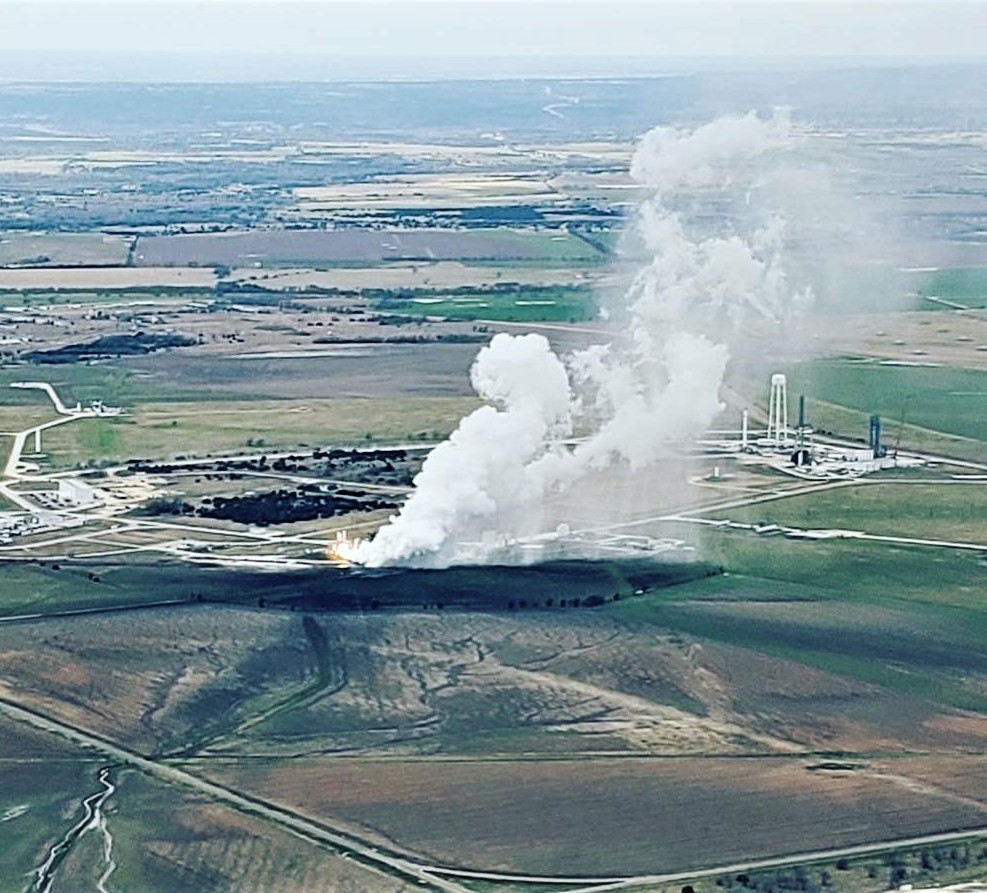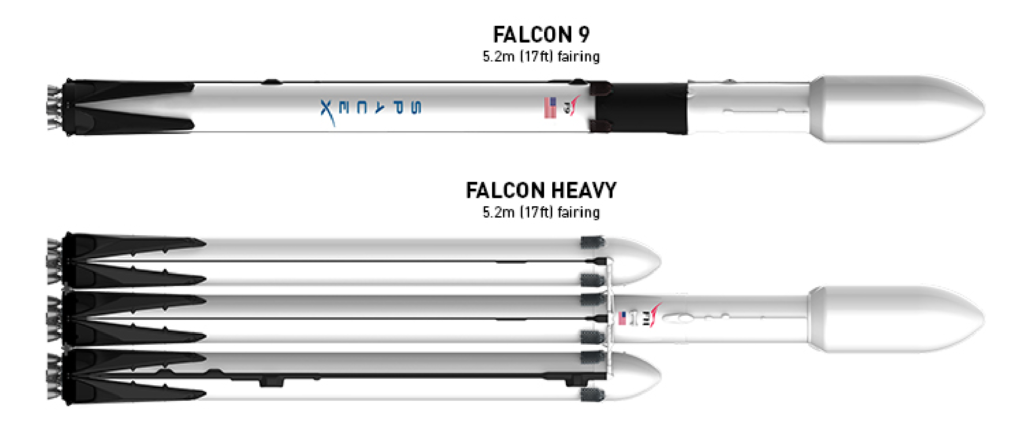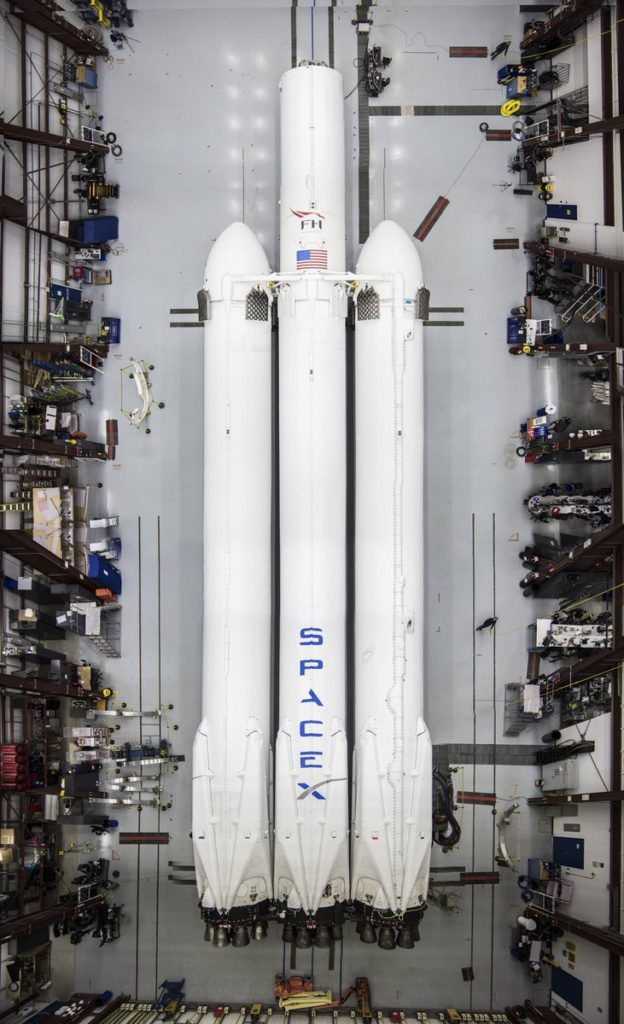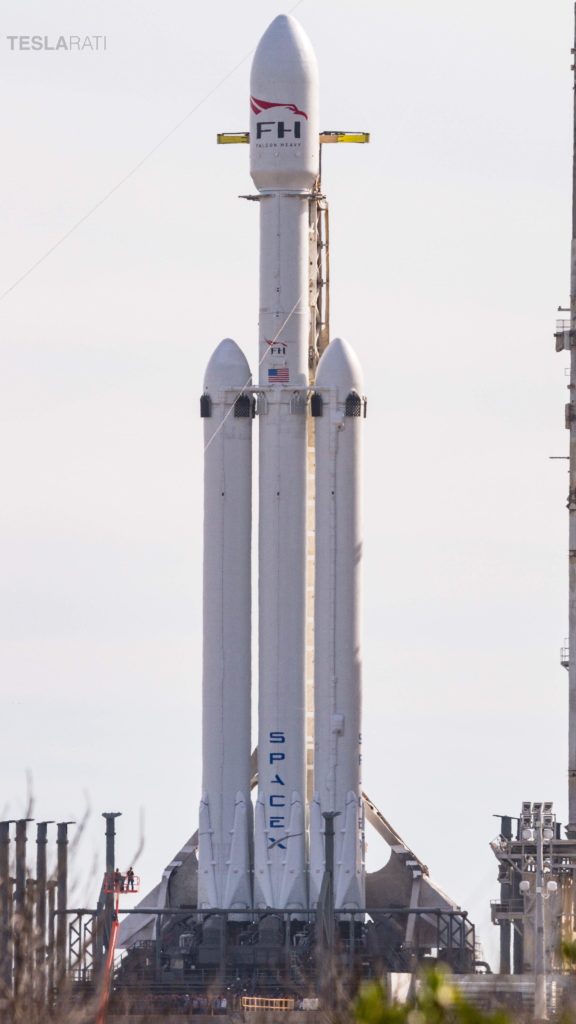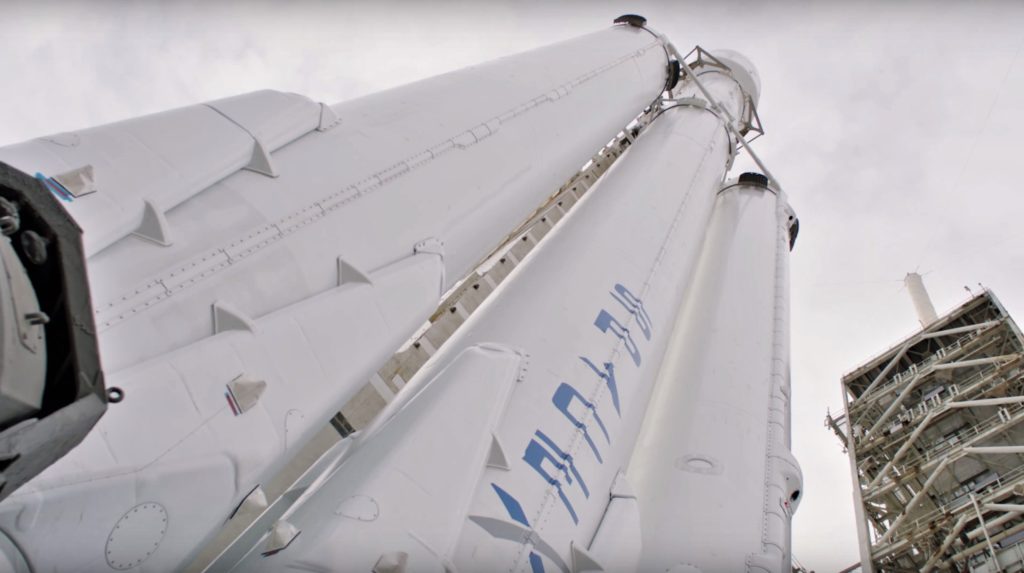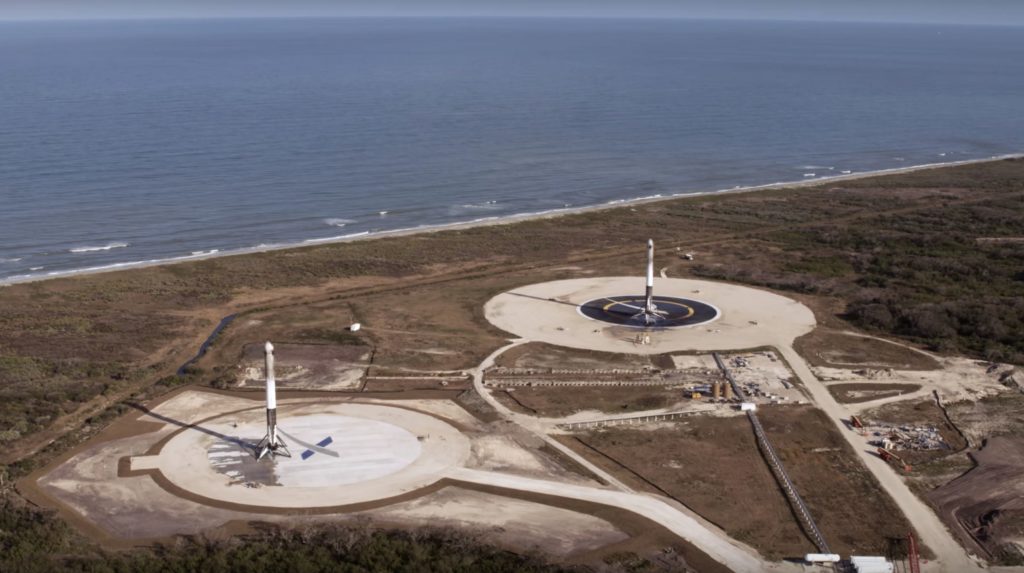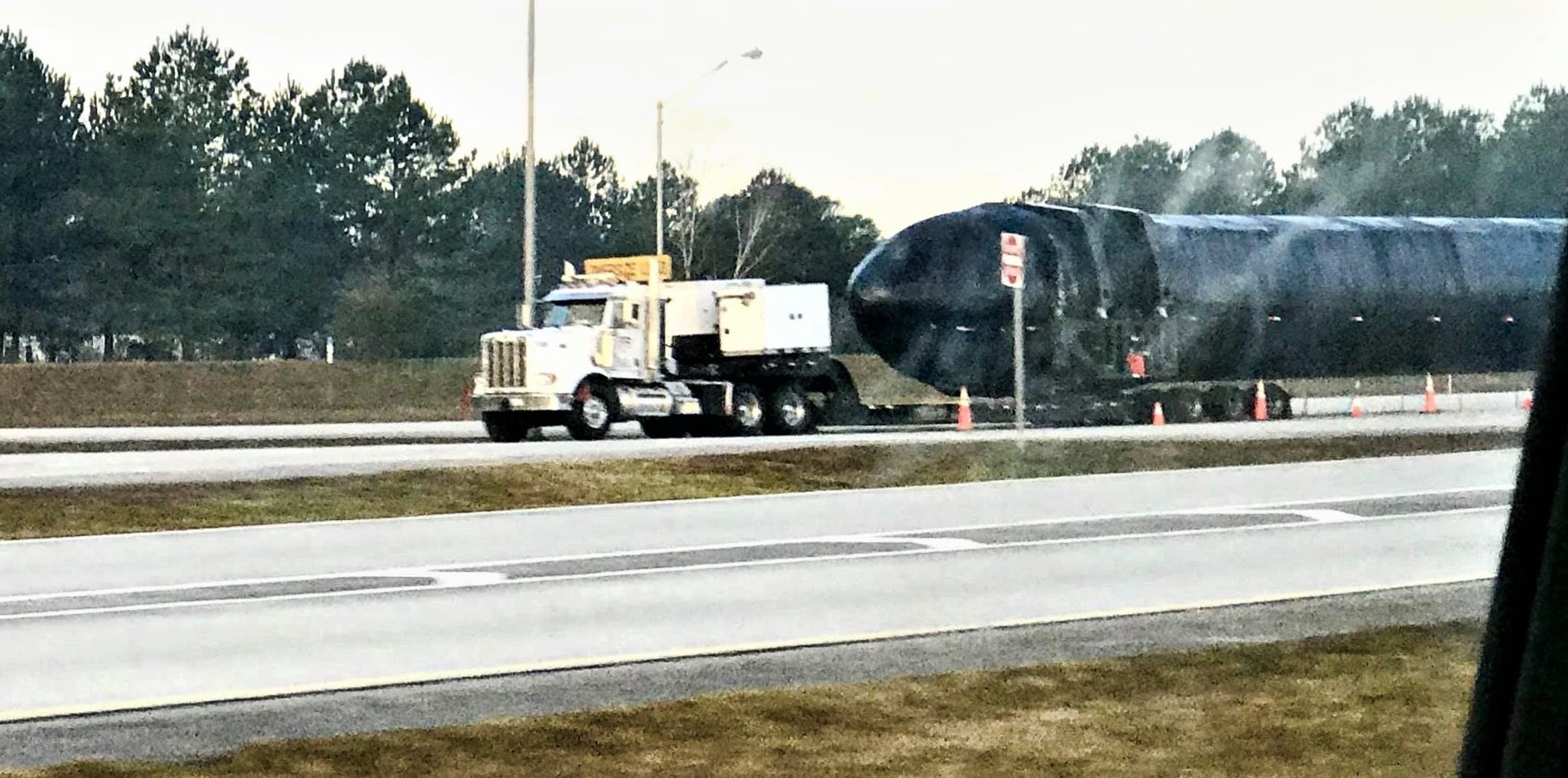

News
SpaceX’s second Falcon Heavy booster arrives in Florida as launch #2 closes in
SpaceX’s second Falcon Heavy side booster has made its way from Texas to Florida after completing a successful static fire acceptance test at the company’s McGregor complex, paving the way for the third and final booster – currently vertical on McGregor’s test stand – to complete its own round of tests and head East.
Once the third and most important booster – known as the center core – arrives at SpaceX’s Florida launch facilities, all three of the next Falcon Heavy’s boosters will be ready to head into the integration stage, culminating in an integrated static fire prior to the second launch ever of SpaceX’s flagship super-heavy-lift rocket.

A Texas pilot happened to fly by SpaceX’s McGregor facilities on January 11th, catching a live glimpse of a Merlin Vacuum (MVac) or second stage static fire test, as well a Falcon booster – perhaps Falcon Heavy’s next center core – vertical on the facility’s booster static fire stand. While it has not yet been visually confirmed as the next Falcon Heavy center core, a booster traveling through the Waco, Texas area to McGregor was spotted with protuberances that are not normally seen on regular Falcon 9 boosters and happened to be in the right place for FH-specific hardware.
- A booster – likely the next Falcon Heavy center core – was vertical at McGregor’s S1 static fire stand. (Instagram /u/tcryguy)
- An MVac or Falcon 9 S2 performs a static fire at McGregor. (Instagram /u/tcryguy)
There is also a case to be made that – per the fact that the first two side boosters have been built, shipped, tested, and delivered back-to-back – SpaceX chose to consecutively manufacture all hardware needed for the second Falcon Heavy instead of producing one or a few single-stick Falcon 9 boosters in between, which the appearance of a center core-like rocket in Texas certainly helps corroborate. While Falcon Heavy side boosters are effectively just Falcon 9 boosters with a few additional attachments and nose cones, currently scheduling indicates that SpaceX may attempt to rapidly turn all three Falcon Heavy Flight 2 boosters around perhaps just 30-60 days after their first launch. Otherwise, once the rocket’s 2019 launches have been completed, both side boosters can be converted back into Falcon 9 boosters and thus reenter SpaceX’s active fleet of flight-proven rockets.
Falcon Heavy’s center core, however, is dramatically different than a regular Falcon 9 booster, owing to the fact that it needs to essentially support triple the thrust and mechanical stresses as single-stick launches. The rocket’s design works to improve payload performance by using the two side cores to boost the center core and leave it with far more propellant left over than Falcon 9 would during a comparable launch profile, roughly equivalent to a three-person bike where only two people are pedaling hard. During a Falcon Heavy launch, side boosters thus separate a solid 30-60 seconds before the center core parts ways with the upper stage and payload.
- A diagram from a recent SpaceX document offers an idea of what Falcon Heavy Block 5 will look like. (SpaceX)
- The first Falcon Heavy, seen here fully integrated aside from its payload fairing. (SpaceX)
- Falcon Heavy just prior to its launch debut, February 2018. (Tom Cross)
- SpaceX’s Falcon Heavy prepares for the huge rocket’s inaugural launch. (SpaceX)
- LZ-1 and LZ-2, circa February 2018. (SpaceX)
Thanks to its significant differences, it’s highly unlikely – if not impossible – for a Falcon Heavy center core to launch a regular Falcon 9 mission. As such, once Falcon Heavy’s 2019 launches are completed, the center core will most likely be processed, refurbished, and then stored until the next Falcon Heavy payload is ready to go, at which point Falcon 9 boosters would be converted into Heavy side cores. Given that the Block 5 upgrade is designed to allow Falcon boosters to perform as many as 10 launches with minimal to no refurbishment and 100+ with regular repairs and maintenance, it’s entirely possible that a single Falcon Heavy center core could theoretically support all possible future launches of the rocket.
In reality, customers like the USAF and NASA will probably request new hardware for foreseeable Falcon Heavy launches, most of which would likely be extremely expensive flagship satellites (AFSPC-52) or interplanetary spacecraft (Europa Clipper).
Fans of @SpaceX will be interested to note that the government is now taking very seriously the possibility of flying Clipper on the Falcon Heavy.
— Eric Berger (@SciGuySpace) December 3, 2018
Falcon Heavy’s next two launches are planned as early as March (a large communications satellite called Arabsat 6A) and April (an experimental USAF launch called STP-2 with two dozen separate payloads). With two side boosters already in Florida, those dates are now serious possibilities, and the center core’s arrival will be the telltale sign that Falcon Heavy’s second launch ever is imminent.
News
SpaceX’s Crew-11 mission targets July 31 launch amid tight ISS schedule
The flight will lift off from Launch Complex 39A at Kennedy Space Center in Florida.
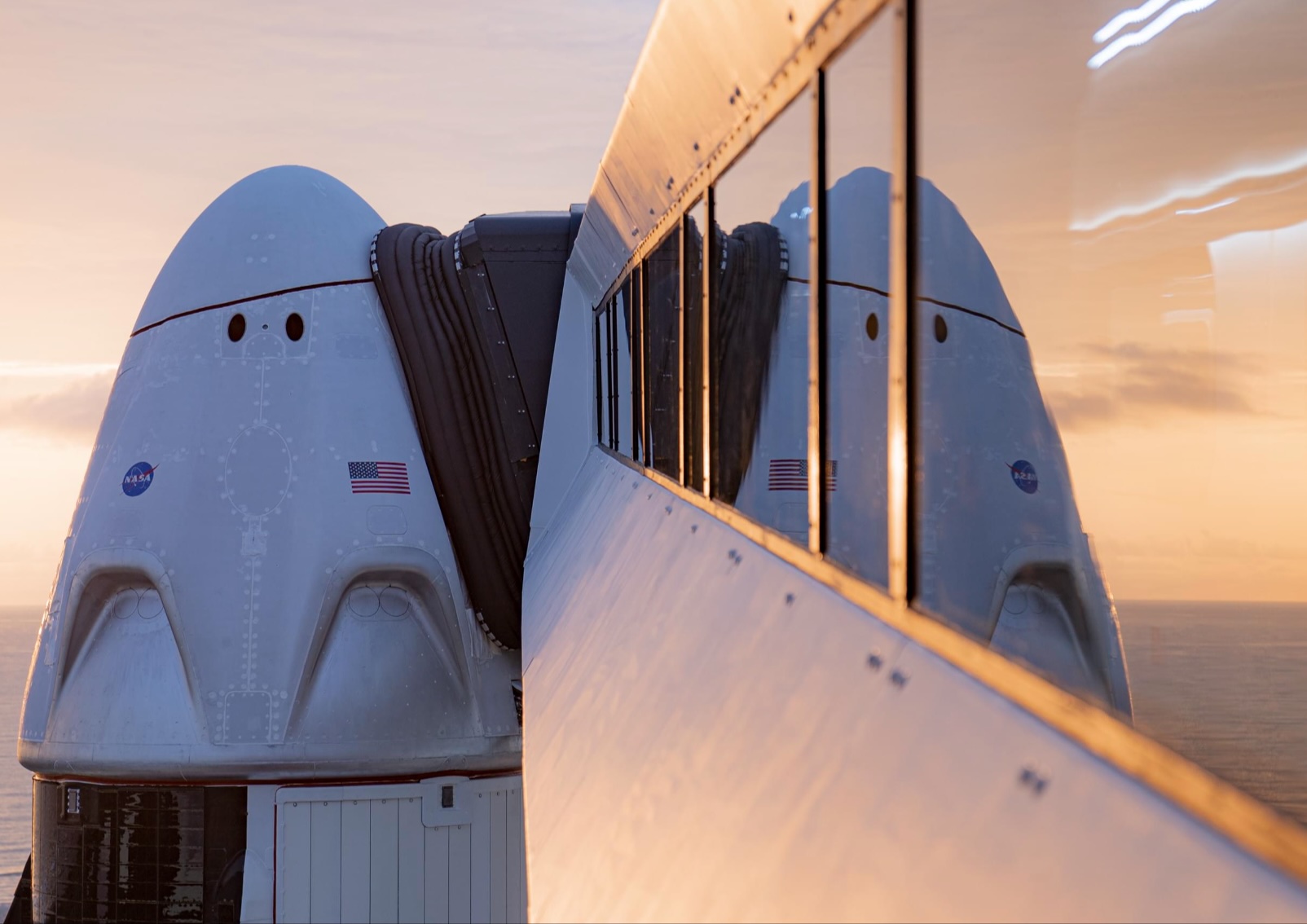
NASA and SpaceX are targeting July 31 for the launch of Crew-11, the next crewed mission to the International Space Station (ISS). The flight will lift off from Launch Complex 39A at Kennedy Space Center in Florida, using the Crew Dragon Endeavour and a Falcon 9 booster.
Crew Dragon Endeavour returns
Crew-11 will be the sixth flight for Endeavour, making it SpaceX’s most experienced crew vehicle to date. According to SpaceX’s director of Dragon mission management, Sarah Walker, Endeavour has already carried 18 astronauts representing eight countries since its first mission with NASA’s Bob Behnken and Doug Hurley in 2020, as noted in an MSN report.
“This Dragon spacecraft has successfully flown 18 crew members representing eight countries to space already, starting with (NASA astronauts) Bob (Behnken) and Doug (Hurley) in 2020, when it returned human spaceflight capabilities to the United States for the first time since the shuttle retired in July of 2011,” Walker said.
For this mission, Endeavour will debut SpaceX’s upgraded drogue 3.1 parachutes, designed to further enhance reentry safety. The parachutes are part of SpaceX’s ongoing improvements to its human-rated spacecraft, and Crew-11 will serve as their first operational test.
The Falcon 9 booster supporting this launch is core B1094, which has launched in two previous Starlink missions, as well as the private Ax-4 mission on June 25, as noted in a Space.com report.
The four-members of Crew-11 are NASA astronauts Zena Cardman and Mike Fincke, as well as Japan’s Kimiya Yui and Russia’s Oleg Platonov.
Tight launch timing
Crew-11 is slated to arrive at the ISS just as NASA coordinates a sequence of missions, including the departure of Crew-10 and the arrival of SpaceX’s CRS-33 mission. NASA’s Bill Spetch emphasized the need for careful planning amid limited launch resources, noting the importance of maintaining station altitude and resupply cadence.
“Providing multiple methods for us to maintain the station altitude is critically important as we continue to operate and get the most use out of our limited launch resources that we do have. We’re really looking forward to demonstrating that capability with (CRS-33) showing up after we get through the Crew-11 and Crew-10 handover,” Spetch stated.
Lifestyle
EV fans urge Tesla to acquire Unplugged Performance for edge in fleet and security industry
Unplugged Performance has built a name for itself by producing performance upgrades for Tesla vehicles.
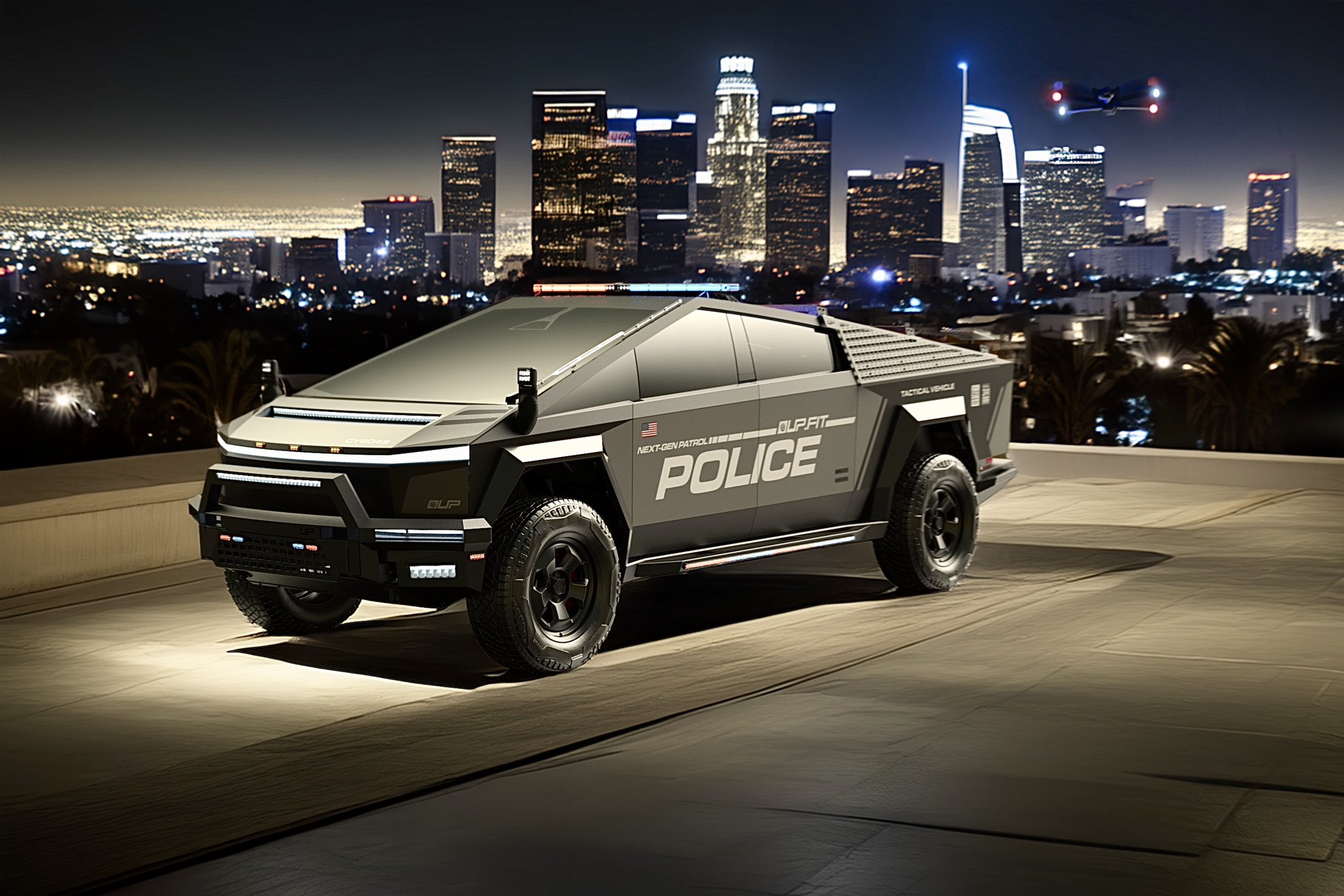
A growing number of Tesla enthusiasts and longtime community voices are calling on the electric vehicle maker to acquire Unplugged Performance, a California-based aftermarket company best known for tuning Tesla vehicles and developing specialized government fleet solutions under its UP.FIT division.
The idea was once considered a niche proposal among EV fans, but it is now gaining serious attention not just as a performance play but as a strategic move to deepen Tesla’s roots in the fleet and security industry.
A strategic fit
Unplugged Performance has built a name for itself by producing performance upgrades for Tesla vehicles, from track-optimized components to visual and aerodynamic upgrades. But in recent years, its UP.FIT division has pivoted toward a more functional future by outfitting Tesla vehicles like Model Ys for police, military, and government use.
That work has sparked growing calls for closer collaboration with Tesla, especially as the EV maker increasingly leans into autonomy, AI, and fleet services as core components of its next chapter.
“I posted this four years ago, but I think it’s more true now than ever,” wrote Whole Mars Catalog, a well-known Tesla investor and FSD Beta tester, on X. “Tesla should buy Unplugged. But not just as a Performance division. What they are doing with UP.FIT unlocks large government and commercial fleet purchases that can improve utilization.”
Tesla fans such as shareholder Sawyer Merritt echoed the sentiment, calling Unplugged a “great fit within Tesla.” adding, “They are literally located directly next to Tesla’s design studio in Hawthorne.”
Enabling the next wave
Supporters of the idea noted that integrating Unplugged into Tesla’s corporate structure could help accelerate the adoption of autonomous technologies in government sectors. With UP.FIT patrol cars already in use across some U.S. police departments, Tesla fans envisioned a future where self-driving Teslas could potentially revolutionize law enforcement, search-and-rescue, and public service logistics.
“Just imagine how autonomous patrol cars could transform policing and bring us into a safer future,” the veteran FSD tester wrote.
The benefits could also extend to Tesla’s existing consumer base. “They also have some incredible products in the works that I think will appeal to many ordinary Tesla drivers — not just those looking for performance or mods. Stuff that’s so good it should have come straight from the design studio next door,” Whole Mars Catalog noted.
Unplugged Performance, founded in 2013, shares not just a product vision with Tesla, but also geography. Its Hawthorne headquarters sits directly adjacent to Tesla’s design studio, and the two companies have maintained a close working relationship over the years. The aftermarket firm has long positioned itself as a “mission-aligned” partner to Tesla.
In response to the recent calls for acquisition, Unplugged Performance acknowledged the support from the community. “Our very existence is to support the Tesla mission with @UpfitTesla and @UnpluggedTesla,” Unplugged CEO Ben Schaffer posted on X. “We love working with Tesla and are grateful for the community’s support since 2013!”
News
Tesla debuts hands-free Grok AI with update 2025.26: What you need to know
All new Tesla vehicles delivered on or after July 12, 2025, will include Grok AI out of the box

Tesla has begun rolling out Grok, an in-car conversational AI assistant developed by xAI, to eligible vehicles starting July 12. The feature marks the most direct integration yet between Elon Musk’s artificial intelligence startup and Tesla’s consumer product lineup, offering drivers hands-free access to a chat-style companion while on the road.
Grok comes pre-installed on new vehicles
According to Tesla’s FAQ page for the feature, all new vehicles delivered on or after July 12, 2025, will include Grok AI out of the box. Owners of older vehicles may gain access through an over-the-air update, provided their vehicle meets a few hardware and software requirements.
Specifically, Grok is currently only supported on Tesla models equipped with an AMD infotainment processor and running vehicle software version 2025.26 and higher. Compatible models include the Model S, Model 3, Model X, Model Y, and Cybertruck. A Premium Connectivity subscription or active Wi-Fi connection is also required.
Tesla notes that additional vehicle compatibility may arrive in future software updates.
Grok’s features and limitations for now
Drivers can engage with Grok using the App Launcher or by pressing and holding the voice command button on the steering wheel. Grok is designed to answer questions and hold conversations using natural language, offering responses tailored to its chosen personality—ranging from “Storyteller” to the more eccentric “Unhinged.”
For fun, Tesla posted a demonstration of Grok likely running on “Unhinged” talking about what it would do to Optimus when they are on a date, much to the shock of the humanoid robot’s official social media account.
It should be noted, however, that Grok cannot currently issue commands to the vehicle itself, at least for now. Traditional voice commands for tasks like climate control, navigation, or media remain separate from Grok as of writing.
The feature is being released in Beta and does not require a Grok account or xAI subscription to activate, although that policy may change over time.
Grok privacy and in-car experience
Tesla emphasizes that interactions with Grok are securely processed by xAI and not linked to a user’s Tesla account or vehicle. Conversations remain anonymous unless a user signs into Grok separately to sync their history across devices.
Tesla has also begun promoting Grok directly on its official vehicle webpages, showcasing the feature as part of its in-car experience, further highlighting the company’s increasing focus on AI and infotainment features on its all-electric vehicles.
-

 Elon Musk2 weeks ago
Elon Musk2 weeks agoTesla investors will be shocked by Jim Cramer’s latest assessment
-

 Elon Musk3 days ago
Elon Musk3 days agoxAI launches Grok 4 with new $300/month SuperGrok Heavy subscription
-

 Elon Musk5 days ago
Elon Musk5 days agoElon Musk confirms Grok 4 launch on July 9 with livestream event
-

 News1 week ago
News1 week agoTesla Model 3 ranks as the safest new car in Europe for 2025, per Euro NCAP tests
-

 Elon Musk1 week ago
Elon Musk1 week agoxAI’s Memphis data center receives air permit despite community criticism
-

 News2 weeks ago
News2 weeks agoXiaomi CEO congratulates Tesla on first FSD delivery: “We have to continue learning!”
-

 News2 weeks ago
News2 weeks agoTesla sees explosive sales growth in UK, Spain, and Netherlands in June
-

 Elon Musk2 weeks ago
Elon Musk2 weeks agoTesla scrambles after Musk sidekick exit, CEO takes over sales


